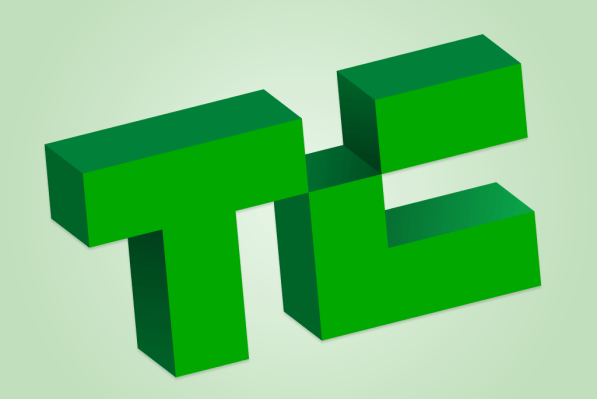It’s been months in the making. It’s taken innumerable twists and turns along the way. It’s survived an acquisition. It’s been a challenge and a privilege to coordinate. It’s my incredible pleasure to present the all-new, completely redesigned TechCrunch. With special thanks to our launch sponsor, Dell.
As Michael Arrington posted on Friday I’m Dave Feldman, and I’ve been acting as product manager for the TechCrunch redesign since the beginning of 2011. The project began last fall before AOL’s acquisition of TechCrunch. By December it needed product management — providing feedback and direction to the design agency (Code & Theory), defining product requirements, understanding TechCrunch’s unusually collaborative editorial process, determining information architecture, and ultimately coordinating the development and launch. Mike asked AOL’s Brad Garlinghouse for a product manager & project lead. He turned to AOL’s head of Consumer Experience, Matte Scheinker (my manager). Matte’s team specializes in “strategic projects” where additional product, design, and/or process expertise is needed. He agreed to take on the project and put me on the case.
TechCrunch is bold. It’s raw. It’s fast-paced. With 50 articles crossing the home page daily we couldn’t simply redesign the reader-facing site; we had to think about the CMS too. We wanted to support you, the readers, because you read every article we post. We wanted to give you better context across posts and topics, new ways to slice and dice content so you can dig into what interests you. We get a huge amount of RSS traffic and wanted to keep providing a full experience to those readers too.
We went through more rounds of wireframes and logos than I can remember. After our eighth rejected visual design I locked myself in a room with Code & Theory’s creative director and we tweaked, discussed and revised until we had something we both liked, a precursor to what you see here today.
The Site
This is a simpler TechCrunch. The carousel of featured posts is gone. In its place are featured articles pinned to the top of the river (look for the little pushpin icon) and features in the header when there’s not an ad. We’ve replaced the chaotic sea of social networking icons with a single, unified Share button. A consistent, site-wide look & feel means less noise distracting you from the content.
We’ve rolled CrunchGear, MobileCrunch, and TechCrunchIT into beta.techcrunch.com/gadgets, beta.techcrunch.com/mobile, and beta.techcrunch.com/enterprise respectively, so it’s easier to reach the articles you want to read. (Some older posts from those sites may disappear for a couple days during the transition, but they’ll be back.) We’ve created richer ways to present articles: as you scan down the home page you’ll see a variety of layouts, each chosen by the author to best represent her work.
Today’s TechCrunch should be a little faster. We’ve built a new codebase from the ground up. We’ve batched HTTP requests, moved API calls server-side, and tinkered with the load order to improve performance. That’s just the beginning: starting next week we’re going to optimize the hell out of this thing.
I’ve seen a lot of comparisons to the recent Gawker redesign — mostly fear that we’d follow their lead. I think we’re all too hard on Gawker: they saw shortcomings in the traditional blog format and decided to try something new, something app-like. They got a lot of things wrong. But the core idea is an intriguing one, and I applaud them for taking the risk. That said, the Gawker approach wasn’t right for TechCrunch. If they ran away from the blog format we doubled down, addressing those same shortcomings by refining and extending it.
The CMS
One of my favorite things about WordPress is its extensibility. We’re on the same platform today as yesterday, but have built new tools for writers and editors. Featured and pinned articles get expiration dates, so editors don’t have to go back and manually un-feature things. Selecting a post layout is as simple as clicking a button. Automated resizing of images means faster load times and fewer distorted photos. And choosing which articles go on the home page is a single-click affair.
The Look & Logo
The new logo is our most controversial change. I love it, though that’s no accident: we went through many, many options with Code & Theory before finding one we liked. It’s bold, simple, and versatile. It works in any context — from a tiny monochrome icon to a mosaic on a poster. It fits the TechCrunch brand perfectly. And no, we didn’t build it in Minecraft. We used AOL Paint, which comes free on the AOL CD and has this sweet UltraLogoMatic2000 feature.
The overall look & feel reflects the bold, sometimes irreverent nature of TechCrunch. It doesn’t hold tea parties in the backyard or hang out with the black turtleneck crowd at the hippest art galleries. It’s a design that breaks more news than its competitors, that loves the code junkies working 22-hour days to build world-changing products. It’s the first and only design Heather, Mike and I looked at and said yeah, that’s it. It screams TechCrunch.
I think of today’s release as a beta. There’s so much more to come: enhanced social features; ways to navigate across articles and dive into topics; new options for viewing posts; better navigation; and improved filtering of content. Even better tools for writers and editors. Vastly improved performance.
Ultimately TechCrunch is about the tech industry, the personalities who cover it, and the readers who track it obsessively. Above all this redesign is about providing the best vehicle for that. We’ll keep enhancing, refining, and revising to get it right. Stay tuned.
